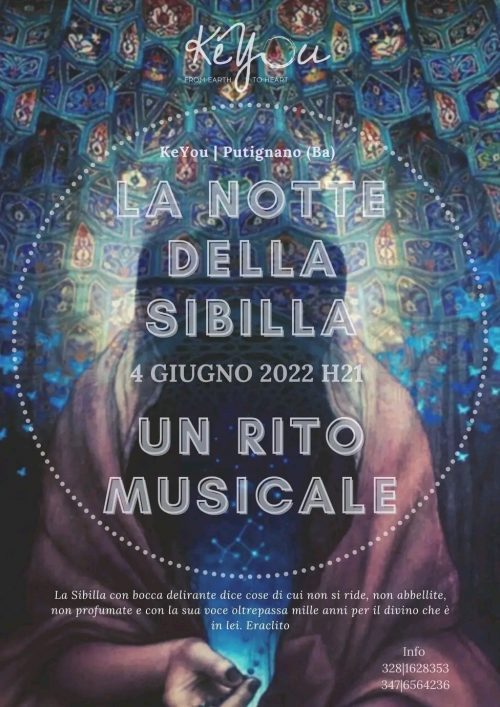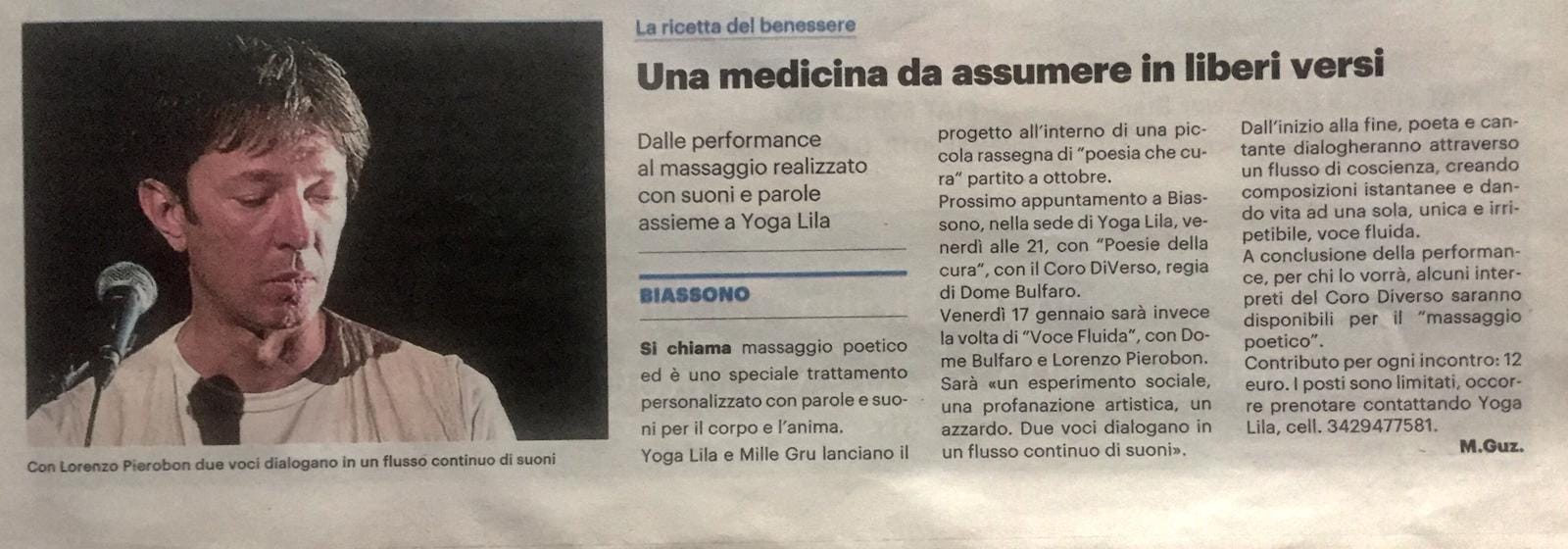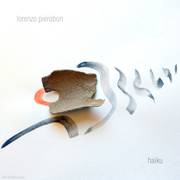 Nebula: Genesis (CD – Stella Maris, 2002). “Questo è il resoconto di come tutto era in sospeso, tutto era calmo e in silenzio, tutto immobile, zitto e l’estensione del cielo era vuota.” Così inizia il Popol Vuh, libro che descrive la cosmogonia secondo la tradizione dei Maya a cui si è ispirato, per questo CD, il progetto Nebula, collaborazione tra cinque artisti che militano nelle scene dell’avanguardia e della musica d’ambiente. Probabilmente questo CD si trova ai limiti dei generi musicali normalmente trattati da Ver Sacrum, ma ritengo sia importante parlare di questo lavoro, un po’ perché esce per una giovanissima etichetta, la Stella Maris, che spero possa continuare a produrre lavori di questo livello qualitativo e un po’ perché, in fondo, i suoni espressi non sono poi così lontani da quelli del cosiddetto dark ambient; i componenti del progetto sono Klaus Wiese (tibetan singing bowls, steel cello, zither, gongs – musicista che sperimenta fin dai primi anni ’70: da ricordare la sua partecipazione al fondamentale Hosianna Mantra dei Popol Vuh), Oöphoi (ossia Gianluigi Gasparetti, synths, samplers, analog and digital processors), Tau Ceti (synths, crystal flute), Lorenzo Pierobon (harmonic singing, live electronics, real time sampler) e Mauro Malgrande (shakuhachi). Il CD contiene sette brani, di cui cinque sono lunghe suite ambientali che durano dai nove ai diciotto minuti e, tranne l’ultimo brano, sono uniti tra loro in un lunghissimo continuum sonoro. Il primo brano, una sorta di breve introduzione, è molto scuro e rituale, caratterizzato da suoni che ricordano quelli di un ottone dai suoni molto bassi cui si sovrappongono apparenti voci che si direbbero quasi filtrate attraverso un didgeridoo. Gradualmente il suono si discioglie in un delicato tappeto sonoro che introduce “Let There Be Light” su cui viene cesellato il lavoro delle singing bowls che massaggiano e accarezzano l’ascoltatore per tutta la durata di questo brano e del successivo “Floating Galaxies”. Suoni più inquietanti fanno nuovamente capolino nel quarto brano, “Time Vessels at the gates of forever”, che con un lento crescendo sembra accompagnare il respiro dell’universo. “Pulves et umbra” riporta la quiete giocando con strutture delicate e sottili che lentamente si sviluppano nella direzione di drones più profondi, portandoci al cospetto della lunghissima “The Secret Pools of Tepeu and Gocumatz”, caratterizzata in tutta la sua evoluzione da suoni gravi e profondi, che chiude il lunghissimo flusso di suoni. Un discorso un po’ a parte va fatto per la conclusiva “The Dawn of Man”, nella quale viene sperimentata l’aggiunta del canto armonico, che si sposa splendidamente all’impasto strumentale. Non mi rimane che consigliare l’acquisto di questo lavoro contattando l’indirizzo di posta elettronica, perché non so se viene distribuito attraverso i canali ufficiali. (Ankh)
Nebula: Genesis (CD – Stella Maris, 2002). “Questo è il resoconto di come tutto era in sospeso, tutto era calmo e in silenzio, tutto immobile, zitto e l’estensione del cielo era vuota.” Così inizia il Popol Vuh, libro che descrive la cosmogonia secondo la tradizione dei Maya a cui si è ispirato, per questo CD, il progetto Nebula, collaborazione tra cinque artisti che militano nelle scene dell’avanguardia e della musica d’ambiente. Probabilmente questo CD si trova ai limiti dei generi musicali normalmente trattati da Ver Sacrum, ma ritengo sia importante parlare di questo lavoro, un po’ perché esce per una giovanissima etichetta, la Stella Maris, che spero possa continuare a produrre lavori di questo livello qualitativo e un po’ perché, in fondo, i suoni espressi non sono poi così lontani da quelli del cosiddetto dark ambient; i componenti del progetto sono Klaus Wiese (tibetan singing bowls, steel cello, zither, gongs – musicista che sperimenta fin dai primi anni ’70: da ricordare la sua partecipazione al fondamentale Hosianna Mantra dei Popol Vuh), Oöphoi (ossia Gianluigi Gasparetti, synths, samplers, analog and digital processors), Tau Ceti (synths, crystal flute), Lorenzo Pierobon (harmonic singing, live electronics, real time sampler) e Mauro Malgrande (shakuhachi). Il CD contiene sette brani, di cui cinque sono lunghe suite ambientali che durano dai nove ai diciotto minuti e, tranne l’ultimo brano, sono uniti tra loro in un lunghissimo continuum sonoro. Il primo brano, una sorta di breve introduzione, è molto scuro e rituale, caratterizzato da suoni che ricordano quelli di un ottone dai suoni molto bassi cui si sovrappongono apparenti voci che si direbbero quasi filtrate attraverso un didgeridoo. Gradualmente il suono si discioglie in un delicato tappeto sonoro che introduce “Let There Be Light” su cui viene cesellato il lavoro delle singing bowls che massaggiano e accarezzano l’ascoltatore per tutta la durata di questo brano e del successivo “Floating Galaxies”. Suoni più inquietanti fanno nuovamente capolino nel quarto brano, “Time Vessels at the gates of forever”, che con un lento crescendo sembra accompagnare il respiro dell’universo. “Pulves et umbra” riporta la quiete giocando con strutture delicate e sottili che lentamente si sviluppano nella direzione di drones più profondi, portandoci al cospetto della lunghissima “The Secret Pools of Tepeu and Gocumatz”, caratterizzata in tutta la sua evoluzione da suoni gravi e profondi, che chiude il lunghissimo flusso di suoni. Un discorso un po’ a parte va fatto per la conclusiva “The Dawn of Man”, nella quale viene sperimentata l’aggiunta del canto armonico, che si sposa splendidamente all’impasto strumentale. Non mi rimane che consigliare l’acquisto di questo lavoro contattando l’indirizzo di posta elettronica, perché non so se viene distribuito attraverso i canali ufficiali. (Ankh)
“Genesis” by Nebula (label: Stella Maris)
“Genesis”, deals with the theme of creation and ultimately emergence of human consciousness. It begins with an exhalation, which the listener imagines as a moment of birth. Since the title of the album is “Genesis”, our imaginations are led on a musical course with seven directional markers. Because it is a work of art, not a didactic treatise, the listener may interpret these points in any way they wish. Obvious references to Biblical, Buddhist, Hindu, perhaps even ancient Greek myths, leaves us free to focus on one, all or even none of these traditions. This is a mixture of electronic and acoustic sounds, a blend of carefully wrought electronic scapes interacting with reverberations of Tibetan singing bowls and floating primeval sheets of flute, that can be experienced either as questions that the listener feels compelled to reflect upon, or else as answers that require deep listening in order to make interpretative patterns on our minds.
The first 4 movements invite us to step through visible and audible aspects of life, submerging in a space permeated with thoughts melting into music. This type of primitive thought seems simple on the surface, yet highly complex to our 21st century minds full of thousands of years of intellectual theories which create an illusion that we are strangers in the world. The 5th movement introduces a tender composition, beautiful in its execution. This piece in particular is reminiscent of some meditation albums of the 80s, but soon gives way to an extended electronic whirling in the sacred pool of Tepeu and Gucumatz. It is this invitation to a long, extended journey beyond the wondrous scapes of #5, that make this album particularly interesting. Many ambient cds would be happy to end on a serene track like “Pulves et umbra”. Many would find the opening of #6 almost unsettling; it can be said to carry a dark-ambient hue. Are the musicians of Nebula asking questions about what lies beyond some visions of apparent beauty? We know from Rilke’s first Duino Elegies that beauty is often an angel that disdains to destroy us. Therefore poetically, this moment is significant. About a third of the way through this track, familiar themes from earlier in the album return, and the ominous chords disappear. A stark emptiness envelopes us, then stretches notes to introduce great swathes of silence. It is this part of the album that conjures some of the deepest meditative states. Nebula manages to sustain a minute variation of tone and sensation. As #6 nears its end, the first stirrings of a shadow move into focus.
Something hovers into our perceptions. We are not at this point sure if it is solid matter, a light, or a consciousness that wants to communicate with us. And this is what makes the album fascinating: mystery is never explained away. But we are given a clue. The final track, #7, is entitled “The Dawn of Man”. It begins with a pause and concentration of energies, before shimmering waves of human voice emerge, barely audible, unfolding into nascent colours and sounds forming the backdrop to human life and imagination.
This music does not encourage a notion that human consciousness is an accidental mushroom that has sprung up on the chemical, organic soup of earth; rather, that we are among the destined manifestations of the universe.
Nebula is a melange of five talents:
1. Klaus Wiese (ex Popol Vuh member): Tibetan singing bowls, steel cello #4, synths #4.
2. Mauro Malgrande: shakuhachi flute and production.
3. Lorenzo Pierobon: harmonic chant and electronics #7.
4. Tau Ceti: synths on tracks #2 and #5.
5. Oophoi (referred to be some as a “Drone Master”): synths, samples, gongs,
drones, loops, waves, processing and concept.
Recorded, mixed & mastered by Oophoi and Tau Ceti in the Kiva, April 2002.
Cover art by Alessandra Clini is tasteful and serene, a spiral shell in electric blue.
review by Mark Krol and Louisa John-Krol, August 2002
Nebula is an incredible collaboration work between OOPHOI, KLAUS WIESE, TAU CETI, LORENZO PIEROBON and MAURO MALGRANDE… “Genesis” is the first record of this collaborative project, an extremely evocative music travel through the creation of the universe from a spiritual perspective.You are guide to this cosmic world by the deeping space ambient sounds and dronning vibrations that make your mind experiment same kind of meditation state. I real advice you ear this, becouse the artists behind it are all great ambient music constructors. The first track in my opinion is amazing.
Ritualistic Nature






Info sull'autore